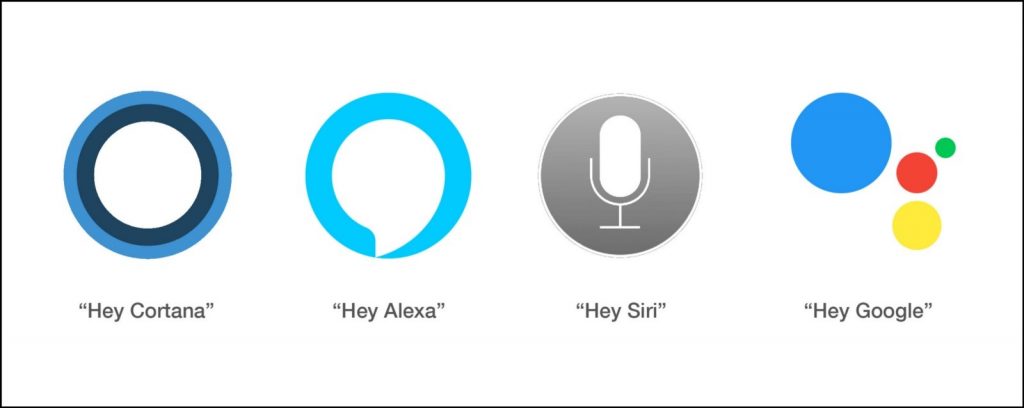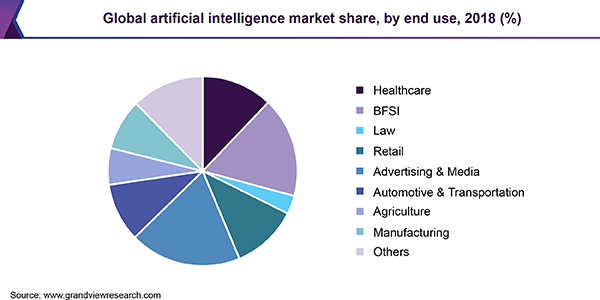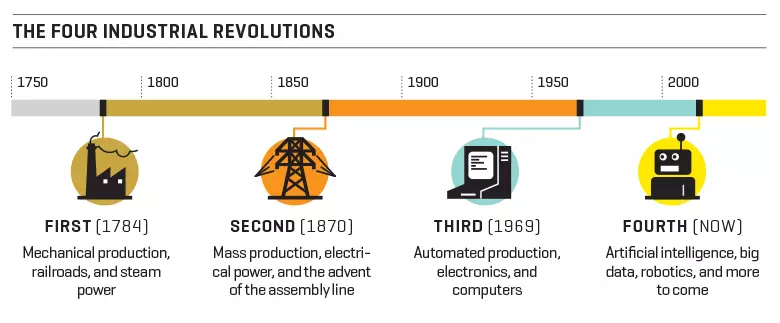There has been a lot of hype over artificially intelligent machines in the last few decades. When most of the regular people hear of AI, the first thing that comes to their mind are these huge robots or some unrealistic image of a machine, who is killing mankind or trying to take over this planet and universe, no wonders this is coming from our lot loved science fiction novels like Midnight Robber, Robots vs. Airies, etc. or from big-budget Hollywood movies of our times like Terminator, Ex Machina, The matrix and many more, but in reality, nothing could be further from the truth.
Authors Stuart Russell and Peter Norvig in their visionary textbook Artificial intelligence: a modern approach, defines AI as “the study of agents that receive percepts from the environment and perform actions”, the basic principle of artificial intelligence is to develop systems that can do reasoning, can generalize and discover meaning or can learn from past experiences to perform tasks, similar to what human does in their real life. It is for sure doesn’t mean to create artificial humans at all at least for now.
While science fiction novels and movies often portray AI as human-like robots, but anything from Google’s search to chatbots & virtual assistants like Apple’s Siri, Amazon’s Alexa, to autonomous vehicles & weapons to Mars rovers comes under the periphery of AI. Furthermore, national governments are also taking help of AI to improve their existing infrastructure. Recently, the UK law enforcement agency proposed to use AI based analytics to help find criminals.

Fortunately, machines haven’t taken over yet, but they are penetrating their way into our lives and are influencing how we live and are touching every sphere like our work life, entertainment choices, health system, education, etc. We knowingly or unknowingly are getting dependent on AI in our day to day life, most of us wake up with any of these virtual assistants like Apple’s Alexa, Amazon’s Siri, Micro soft’s Cortana, Google Now, and use it for checking our schedule, sending emails, performing web searches, we talk to chatbots for information services that answer like real humans, use google map for directions finding addresses, hotels, restaurant or for calculating traffic every day, we use autonomous self-driving, or driving assistance empowered vehicles for travel, everyone is on social media which is using AI-driven technologies like big data, deep neural networks to learn our preferences over time and then recommends or advertise products and services as per our requirements, social media like Twitter, Facebook also use similar technology to monitor our activities and blocks violent and racist content on its own.

Today AI is restricted to something called narrow AI, which performs specific tasks better than humans or with human-like characteristics, as mentioned in the previous section. However, researchers and scientists are aiming for General AI in the long term, which will behave humanly or will outperform humans in almost all tasks.
As we can see at present AI is touching almost every sphere of our lives, thereby effecting the economies at an individual, nation and world level. AI is disruptive to the economy at both micro and macro levels, on the one hand, Disruption is at the individual, company/organization level, on the other hand, it is disrupting the economy of nations and the world as a whole.
AI Disrupting Global Market
World economies have a huge influence on AI due to its increasing market shares in every industry. According to the above figure regarding the global market share of AI industry-wise, the advertising and media segment dominated the overall market for AI in 2018, whereas the healthcare sector has been forecasted to gain the leading share by the year 2025. 
Source: World Economic Forum on Fortune.
AI is part of the Fourth Industrial Revolution, and businesses across the globe are adopting AI because it is adding new dimensions and making their product and services intelligent. According to International Data Corporation (IDC) report, there will be an increase of $46 billion in the worldwide spending on cognitive and AI systems from the year 2017 to 2021, AI revenues are expected to increase to $ 77.6 billion by the year 2022. Thus, AI has transformative affect individuals, businesses, nations, and the world.

Taking away livelihoods and creating Unemployment
According to the Forrester report, AI will automate 16% of jobs and will create a net loss of 7% jobs in the USA by 2025. At the micro economy level, AI is taking away the lively hood of people and on the macro-level creating problem of Unemployment globally and mostly in underdeveloped countries where AI adaptation is slower.
Implementation of AI within industries could be divided into two categories one which keeps Human-in-loop, for example, using AI assistance to assist and augment the Workforce to increase productivity by freeing up their time to focus on more stimulating and higher value-adding activities and helping them to work efficiently and perform better. Other category keeps No-Human-in-loop, i.e., automating processes with robotics or other technologies, or creating autonomous agents, removing the labor input altogether. The first category yields benefit overall by increasing productivity, provides better customer experience, better quality outputs, increases R&D and accuracy whereas the second category is elimination lower-skilled jobs that include routine manual tasks, non-technical administrative tasks or regular jobs like a security guard, receptionist, call center workforce, etc.
People who are or will lose jobs due to automation of regular jobs need to upgrade their skills to meet the technical requirements and earn their livelihood. In general, people who do regular jobs do not have any technical skills, due to lacking background of technical education or, in many cases, have very little or almost no education. For youngsters, at least it is easy to divert their education in a certain way to acquire such skills, but to people who are performing these routine jobs for many years now and have lower learning capacity to acquire completely new skills for them, it looks next to impossible to cope up. No-human-in-loop AI technologies thereby are abandoning such a workforce and making them hard to earn their livelihood.
AI Making life difficult for moderately skilled workers
The Disruption due to AI is also influencing wages across industries and giving rise to uneven income distribution and economic inequality worldwide. Demand for AI skills pushing the wages up for those who are skilled at it, the wedges for mid-skilled workers, on the other hand, are being pushed down because everyone wants to hire upper-skill workers and also because upper-skill workers get AI assistance at work that makes them more productive. Hence Workforce with very little AI skills is being forced to accept underpayment, whereas low-skilled workers with regular jobs are going towards Unemployment.
The Paradox of Plenty

The more AI solutions will automate and replace regular jobs, the overall productivity and growth will increase at a faster rate, thereby increasing income inequality sharply. This situation is going to create the paradox of plenty in the future, where the overall society will be much richer than individuals or counties who are slower to the adaptation of AI and, in the long-term, will lead to a monopoly-like situation for individuals, companies, and countries.
According to one of the adobe report in February 2018, 15 per cent of enterprises are using AI, and 31 percent of them say that it is their agenda for the next 12 months. Almost all companies worldwide are trying to bring AI into their system, it may sound that AI is business-friendly, but its implementation is not very smooth, especially for mid-level and startup businesses. Introducing AI into business needs right technological expertise and investment within the organization to find out and implement right kind of AI technology, which is best suited for organizations motive and keep their basic product or services aligned, many businesses, while trying to implement AI are losing their relevancy and perspective over time.
Small Scale Industry facing tough competition
AI hype is also creating a technological advancement pressure on small scale businesses, thereby increasing cost for these non-technical product and service companies. These businesses are not in much need of AI technologies but are forced to implement one, to keep themselves in the race with other large organization which can easily afford such technologies, leading to unnecessary cost of hardware, software and human resource making these small scale businesses hard to survive in the market. At the time, it is challenging for small scale companies and startups to find the perfect balance of research and implementation while keeping their cost low, which might not be the case for the large and established organization which has a good investment for R&D. This kind of situation is again giving rise to the monopoly of these large-scale organizations which have adapted AI smoothly and thereby removing small scale players from the map, at least making their competition and survival tough in the market.

Challenges to AI adoption (O’Reilly)
In an eBook report published by O’Reilly In 2019 shows that AI adoption is going to be rough for many enterprises and summarizes the common factors which are likely to hold back these enterprises from AI adoption and will affect the world economy in a disruptive way.
Disruption of Global Workforce

AI is also bringing in the challenge of hiring the right skilled Workforce to recruiters, and the right skilled Workforce is one of the main components of a healthy economy. Companies are being more demanding for digital skills than social and cognitive skills, and this is intensifying the war between organizations to hire those with skills of using AI tools even for non-technical positions.
World business and economy need training programs at large scale to acquaint the Workforce with this disruptive technology. Recently Amazon, the second-largest private employer in the United States and one of the world’s most valuable companies, announced that they are going to spend $700 million to train about 100,000 workers in the US by 2025 to help them to move to high-skilled jobs.
Women’s Workforce around the world is also disrupted by AI advancements. According to one of the reports of McKinsey Global Institute 20-160 million of women across the globe needs to go through occupation transition to high – skilled jobs by 2030, as women are dominating 72% of clerical job like scheduler, secretaries, etc. and needs to upskill themselves to cope up with technological advancements.
The Road Ahead
AI is continuously evolving, and the world is continuously trying to adapt to it, at present Narrow AI technologies are already influencing all spheres of our lives and almost every industry and thereby economy of the world. Future is going to be all about General AI systems; it is very evident that eliminating it from our lives is inevitable; hence it is important that individuals, organizations, governments and world organization together should work toward essential training for the Workforce to cope up, provide infrastructure and support in a way such that consequences of AI advancement should be least. Also, AI has many positive effects in many spheres, including world economics, apart from all the disruptions mentioned in this article and should be considered to conclude the overall effect.

